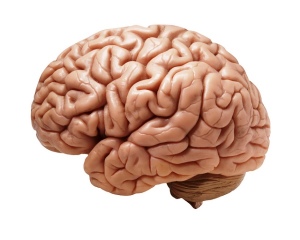
Does your mind wander? During a class or meeting, do you find yourself staring out the window and thinking about what you’ll do tomorrow or next week? Daydreaming gets a pretty bad rap. Unfortunately, history hasn’t been so kind to daydreaming. In the 1960’s, psychology textbooks warned teachers that students who daydreamed were headed for psychosis.
The truth is we spend 50% of our walking lives daydreaming.
Psychological research is beginning to reveal that daydreaming is a strong indicator of an active and well-equipped brain. A new study, published in Psychological Science by researchers from the University of Wisconsin and the Max Planck Institute for Human Cognitive and Brain Science, suggests that a wandering mind correlates with higher degrees of what is referred to as working memory. Cognitive scientists define this type of memory as the brain’s ability to retain and recall information in the face of distractions.
When you daydream you are actually giving your mind a workout. An area of the brain called the “default network,” is this area that is often considered accountable for daydreaming. It becomes more active as the stimulus level diminishes. During a daydream the mind is very active. Marcus Raichle, a neurologist at Washington University, illustrates this concept; “When you don’t use a muscle, that muscle isn’t doing much, but when your brain is supposedly doing nothing and daydreaming, it’s doing a tremendous amount of work. Scientists call it a resting state, but the brain is not at rest at all.” Mind wandering isn’t free—it takes resources
Daydreaming is part of a healthy mind—studies show people with autism or Alzheimer’s disease have problems with daydreaming.
Below are some benefits of daydreaming.
Enhanced Memory

According to the American Psychological Association, imagining something from a personal perspective can be an effective way to recall specific information on command. As a result,imagination could help in memory rehabilitation for those who may have suffered from impairments due to a brain injury.
Creativity

Non-directed thinking might lead you to concrete, creative outcomes. Daydreaming leads to intangible forms of creativity. It is useful for your work life. In 2011, neuroscientists found that daydreaming involves the same brain processes associated with imagination and creativity.
Empathy
Research published in Psychological Bulletin indicates that people who daydream are more likely to have empathy. Studying Israeli high school students, researchers observed that students with high scores on the Daydreaming Scale of the IPI demonstrated more empathy than students who scored low on the scale. Spend more time daydreaming, and you just might become a more compassionate person.
Self Discovery
Since the time of Socrates it has been thought that coming to know ourselves is both a major goal and the foundation of all truly successful learning. We can think about daydreaming as carrying out a dialogue with ourselves and self discovery.
Better Mood
You find serenity by reliving pleasant experiences. You can imagine yourself engaging in virtually any enjoyable endeavour. This type of mental escape allows you to recharge and improve your mood.






